
Author | Weinika
Editor | Li Chunhui
The drama powder of the three ancient dolls in the summer file fell into a heated debate about the ranking. But no matter what criteria you use,From the perspective of publicity, Freesia is the best and richest.
There are only 90 Weibo hot searches in the long broadcast cycle of 56 episodes of "Splendid Star"; Also divided into two parts, 59 episodes of "Aquilaria Resina", 116 hot searches in Weibo; But "Freesia Tactics" has not been broadcast yet, so far it has reached 131 hot searches in Weibo.
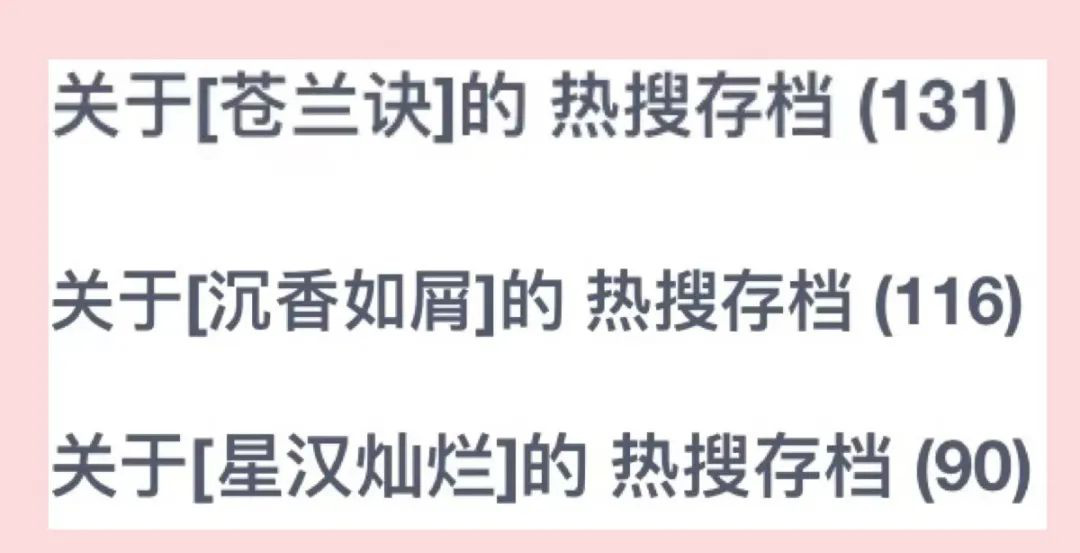
The image comes from the hot search engine, and the data ends on August 27th.
The gap in Tik Tok’s hot list is even wider. From the second day of its broadcast, Freesia has been on the hot list, with an average of 5 hot list topics per day and up to 10 hot list topics per day. And "brilliant star" has never been on a hot list. Although Aquilaria Resinatum is on the list almost every day, the number is small, 1-4, and not all of them are positive topics.

It is clear at a glance that the cost of the publication of Canglan strategics is plentiful. It is needless to say that its broadcasting platform, iQiyi, is now open source and thrifty, and its consistent announcement strategy. Why is the film so exciting? It has to be said that the magical company behind "Freesia", which was established only four years ago, suddenly became popular-stellar gravity.
The general impression it gives the people who eat melons is that the boss, Wang Yixi, is very skillful, and he always replies to fans or publishes small essays. For example, he cries on the high-speed rail when he hears that the heat is breaking through. The impression given to insiders is that they are rich and know nothing else.

Nowadays, because of the discussion of freesia, many drama fans begin to hope that the gravity of stars will inherit the mantle of ancient dolls. In their view, Tang people declined from brain drain, and Zhouyi declined from the break of capital chain. The stellar gravity found the behind-the-scenes team of the Tang people, and the boss was a rich second generation who was not short of money, so he completely filled the shortcomings.
Is this really the case?
A producer who knows rice circles better than "Yu Ma"
Wang Yixu, the boss of Stellar Gravitation, Yu Zheng, the boss of Entertainment Film and Television, Liu Ning, the vice president of Perfect World, and Yang Xiaopei, the boss of Xixi Film, were honored as "Four Fine Producers" by netizens for their frequent essays and responses to netizens.
But after careful study, Wang Yixu is actually different from other producers. Most producers are keen to tell about the difficulty of the production process in order to win the sympathy of the audience; Or a online celebrity posture that wants to make a debut and constantly expresses itself. For example, Zheng Zheng often takes his own selfie after losing weight successfully. However, Yu Zheng’s essays are not all self-expression. To be honest, he is sometimes regarded as a reasonable guest who exposes the situation of the industry.
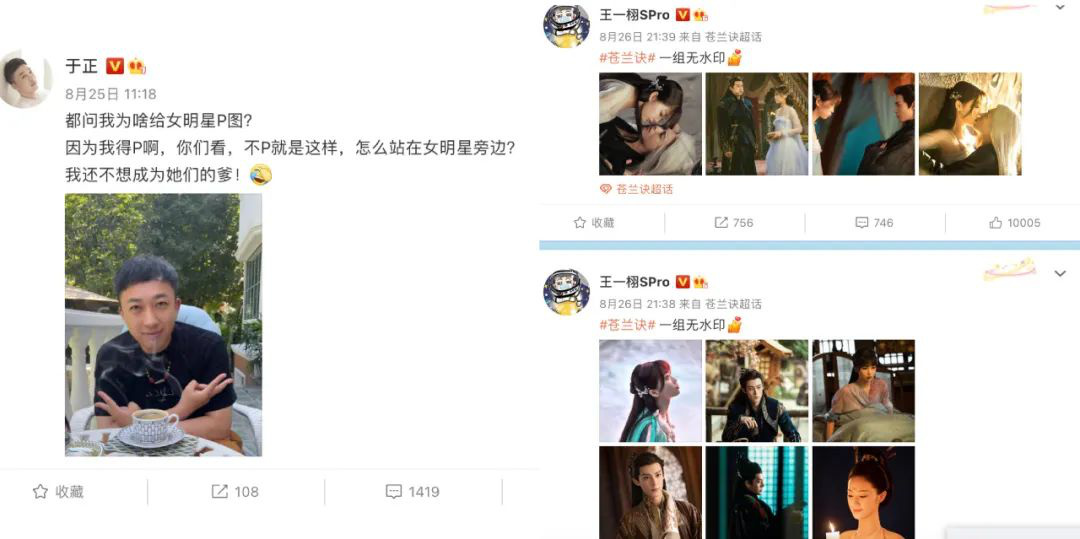
And Weibo, who is in Wang Yixu’s list, mistakenly thinks that Hard Candy has clicked into some big powder Weibo.He doesn’t look much like a producer. He doesn’t have any self-expression, but more like a fan operator.
For a drama project, from shooting to broadcasting, he constantly released various photos taken without watermark, and constantly drew prizes for fans who forwarded photos, and often forwarded fans’ second-generation videos, comic books and so on. In addition to "Freesia Tactics", YCY and Ding Yuxi’s "Lucky at Seven o’clock", which has not yet been broadcast, are also being reprinted wildly by Wang Yixu.
This kind of high-frequency fan interaction has made the series warm up in the starring powder circle and the core drama powder circle before it started broadcasting. I have to say that Wang Yixu knows the way of rice circles and uses it for the promotion of dramas.
Esther Yu and Dylan were suspected of quarreling in the live broadcast of "Freesia", but neither side responded afterwards. However, Wang Yixu responded positively to fans that Wang Hedi had "coaxed" Esther Yu, and they often quarreled. As soon as this word came out, the cp powder in a group of plays could not stop hitting the real cp.
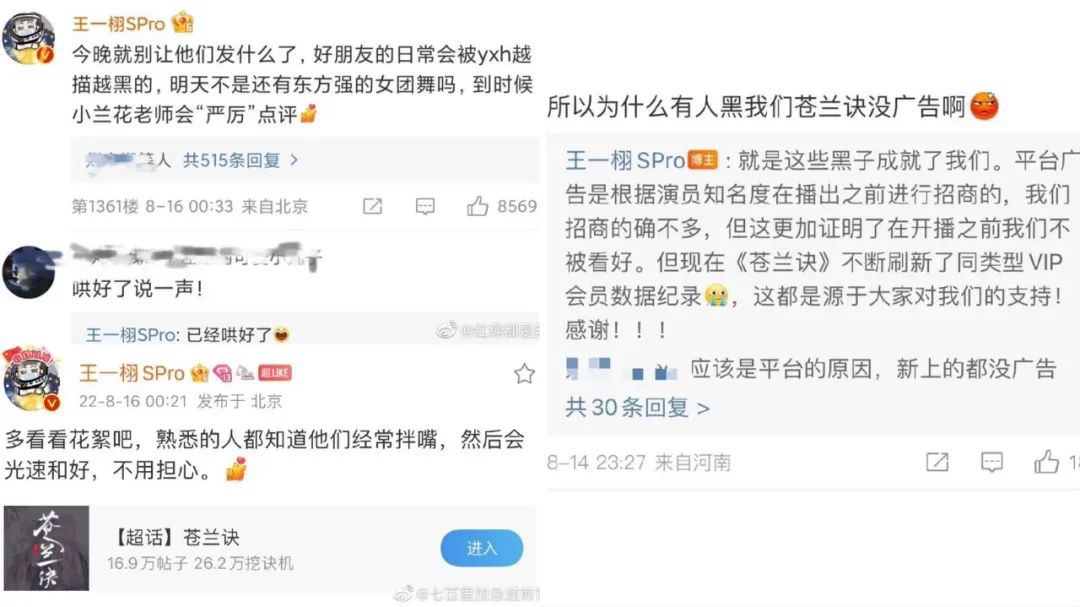
Even the drama attracted less investment, and Wang Yixu did not forget to affirm the efforts of fans. Wang Yizhen called "black spots" (black powder, I really didn’t see any producer directly use this kind of rice circle language) to make "Canglan tactic", which was not optimistic at first. Later, due to the efforts of fans, the data records of the same type of members of iQiyi were constantly refreshed.
Isn’t this the most familiar powder abuse routine for Xiufen? Telling the helpless story that the project is not optimistic creates an illusion that "my brother only has fans", thus enhancing the stickiness and initiative of fans.
In fact, Wang Yixu’s skillful marketing of rice circles was first applied to SNH48 whitehairpin, the star of the play, during the period of "Chasing the Ball", and he bought 1,000 numbers for whitehairpin to play the list and vote in the general election, but he failed to bring a red drama series successfully.
When the IP drama "Fox Demon Little Matchmaker" of Guoman was played, Wang Yizhen was even more perfect.Netizens’ first impressions of the play are: xx appeared on the Internet, xx denied it, and then Wang Yizhen personally refuted the rumor or responded ambiguously to the rumor.Obviously, it is not a super IP, but it gives the whole story of who will play the little dragon girl and who will play Lin Daiyu more than ten years ago.
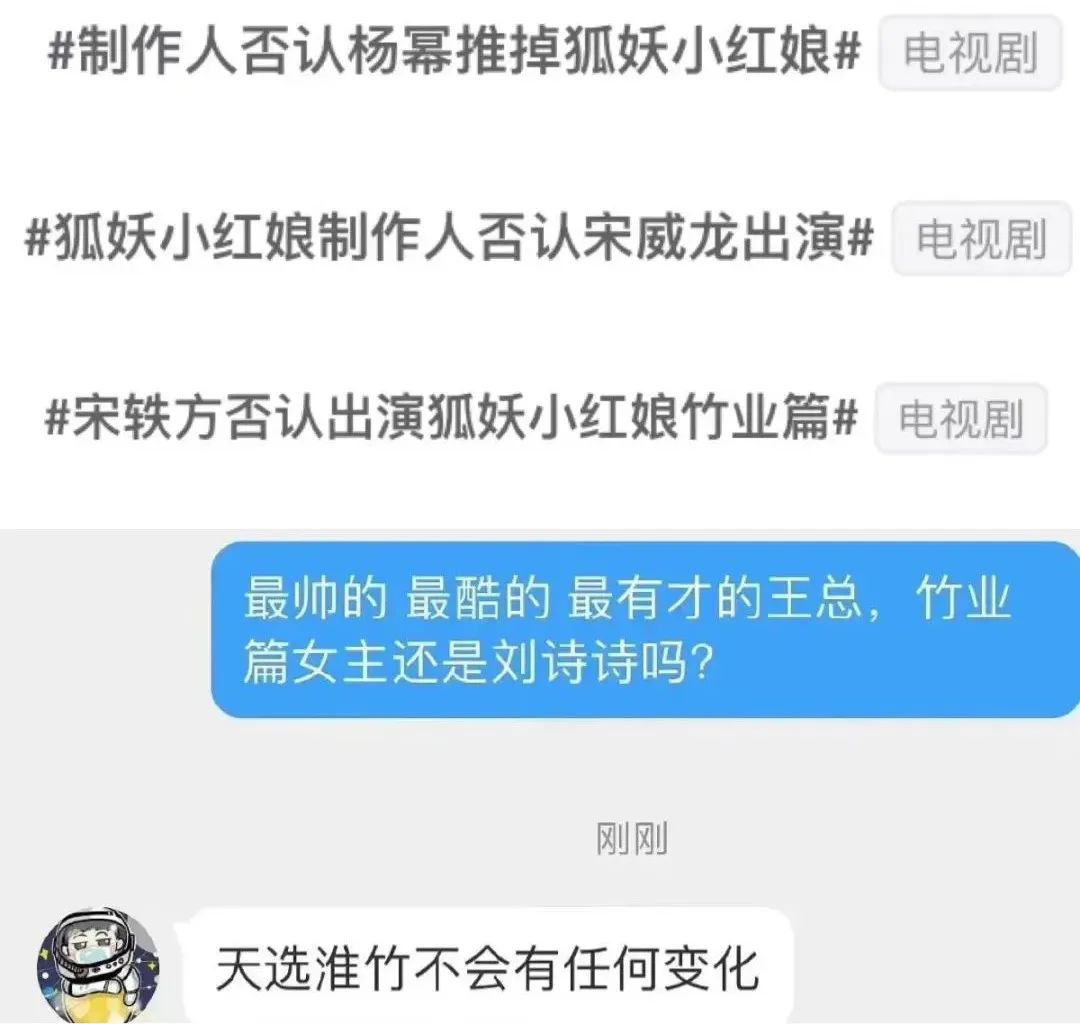
Male starring candidates from JC-T, Li Xian, Chen Xiao, Cheng Yi to Liu Yuning, slipped through the first-line niche; Liu Shishi, Angelababy and Ni Ni were chosen as the leading actresses in Yang Mi.I slipped through 85 flowers, as if half the entertainment circle were competing for the role of the play.
Later, Yang Mi and Simon joined the group "The Fox Demon Little Matchmaker Moon Red", which was thought to be settled. Who knows that the rumors about Liu Shishi’s acting are still going on, and Wang Yixu replied to a private letter from netizens that there will be no change in the selection of Huaizhu. Although he didn’t name names, Liu Shishi, who was sealed by many fans, will still star in The Fox Demon Little Matchmaker Bamboo Industry.
A new generation of Tang people?
In Weibo, Wang Yixu mentioned that he had watched the dramas of the Tang Dynasty since he was a child, which immediately triggered many netizens’ discussion about using stellar gravity to mark the Tang Dynasty. So, does this young company, which is only 4 years old, really have the potential to inherit the mantle of the Tang Dynasty?
Judging from the layout of the original star gravity, it is obviously not focused on Xianxia ancient dolls.In 2018, the star gravity, which entered the industry for the first time, invested a lot of literary films.. Including "A Cloud Made of a Rain in the Wind" directed by Lou Ye, "The Poet" starring Song Jia and Zhu Yawen, and "Punch Mom" starring Tan Zhuo. These movies have a high probability of losing money.
Only the film "Get My Brother Away" which cooperated with Wanda made a small profit. However, in 2020, Stellar Gravity and Wanda still have a contract dispute lawsuit without public ruling, which shows that Stellar Gravity is not going well in the film field.
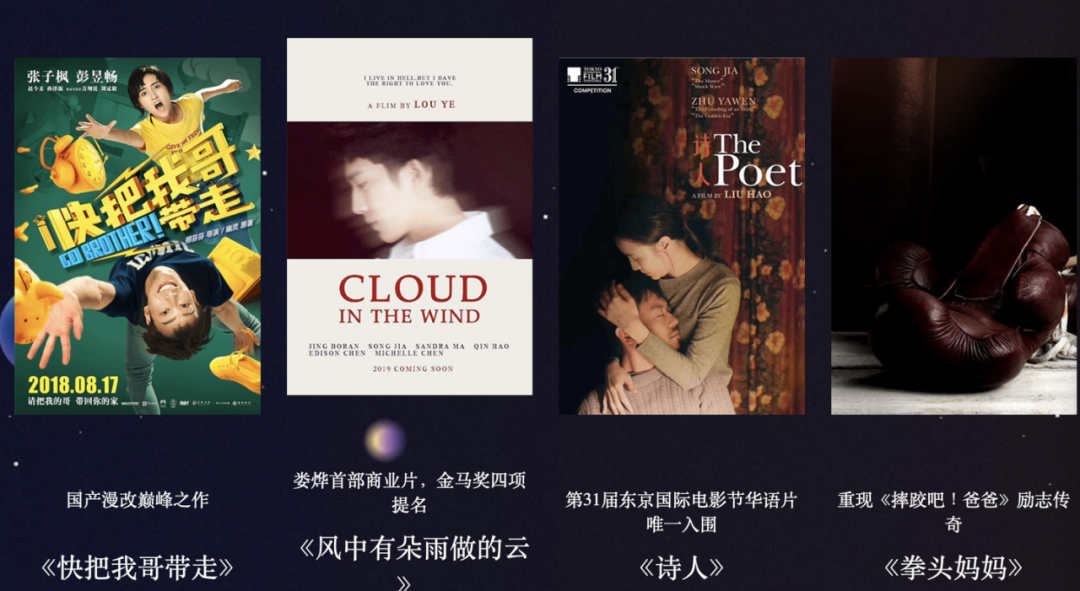
In 2019, the sand sculpture drama "Once upon a time, there was a Lingjian Mountain" was a small reputation and popularity, and the focus of stellar gravity seemed to turn to the field of TV dramas. The play of stellar gravity is no different from that of most film and television companies. From buying IP and hoarding IP to signing authors, screenwriters, directors and actors, it involves the development of the whole industry chain.
Many people behind the scenes have a suffix of "Star Project" in the subtitle of "Freesia Tactics". This "Star Project" is a plan to train new people by stellar gravity, which means that many of these behind-the-scenes teams are self-trained. Including directors Yi Zheng and Qian Jingwu of Freesia, chief screenwriter Liu Xiaolin of the first draft, chief screenwriter Jinjin Bai of the final draft, screenwriter Zhang Li, co-screenwriter Cao Xiaotian, visual effects producer Ye Zi, music director Huang Yi, etc.

Looking through it, the "Star Project" also includes signed writers/screenwriters: Wuzai, Jiulu Feixiang, Taotao Round, Jane Dark, etc. Jiulu Feixiang also has two ancient puppet works "With the Phoenix" and "Protecting the Heart" adapted by other families. Artists’ brokerage is not outstanding. At present, Guo Xiaoting is a bit famous, and Ryan has a contract dispute lawsuit with Stellar Gravity.
In fact, most film and television companies with production ability have a set of their own training teams. The famous midday production system mostly comes from the "Shandong Gang" of Shandong film and television. A stable and efficient production team can reduce a lot of unnecessary troubles.
However, this kind of situation is rarely publicly marked like stellar gravity, and it has a title. The previous person who emphasized his own team was 500.
The arc alliance initiated by 500 includes director Wang Siyang, group B director Song Xiao, screenwriter Yu Xiaoqian, photography director Liu Yingjian, lighting director Sun Jingliang, action director Li Yinghui and so on. They will also add a suffix "A·L·U", which is the abbreviation of "ARC LIGHT UNION" in the subtitle display of "Black Storm".

This approach is equivalent to branding the production team.With the accumulation of word-of-mouth of subsequent works, it can not only cultivate mature behind-the-scenes personnel, but also increase brand value and social status.
However, whether the plan can be successful depends on whether there are successive successful works. Because they are satisfied with "Freesia", the audience who are expecting stellar gravity to inherit the mantle of the Tang Dynasty will have to wait patiently for the broadcast of the next ancient puppet by stellar gravity.
However, stellar gravity can still carry out such deep-pocketed marketing in the case of saving money in the whole industry, and Hard Sugar Jun is inevitably curious about its capital background.
where is the money to come from?
It is rumored in Jianghu that Wang Yixu is a rich second generation "idolize Big Brother".The first company he founded in 2015, Shanghai Renxiang Culture, is mainly engaged in star data analysis and provides fan data algorithm services for video websites.Therefore, it is not surprising that Wang Yixu knows the way of rice circles.
Wang Yixu’s other background can only be found that he attended the Ivy League University jointly founded by Tencent and cheung kong graduate school of business Chuangchuang Community, and studied Tencent’s business model and cultural and creative industries. Whether the "money" of stellar gravity comes from Wang Yixu or not, Hard Sugar Jun is skeptical.
According to Tianyancha information, Wang Yizhen’s financial situation in 2018-2019 may not be particularly optimistic. There were two cases in which the equity was pledged, and the pledgee was Bank of Beijing Shanghai Branch. Equity pledge refers to the act of pledging the company’s equity as a guarantee. Generally speaking, the major shareholder is short of money or the company is not well managed to pledge the equity.
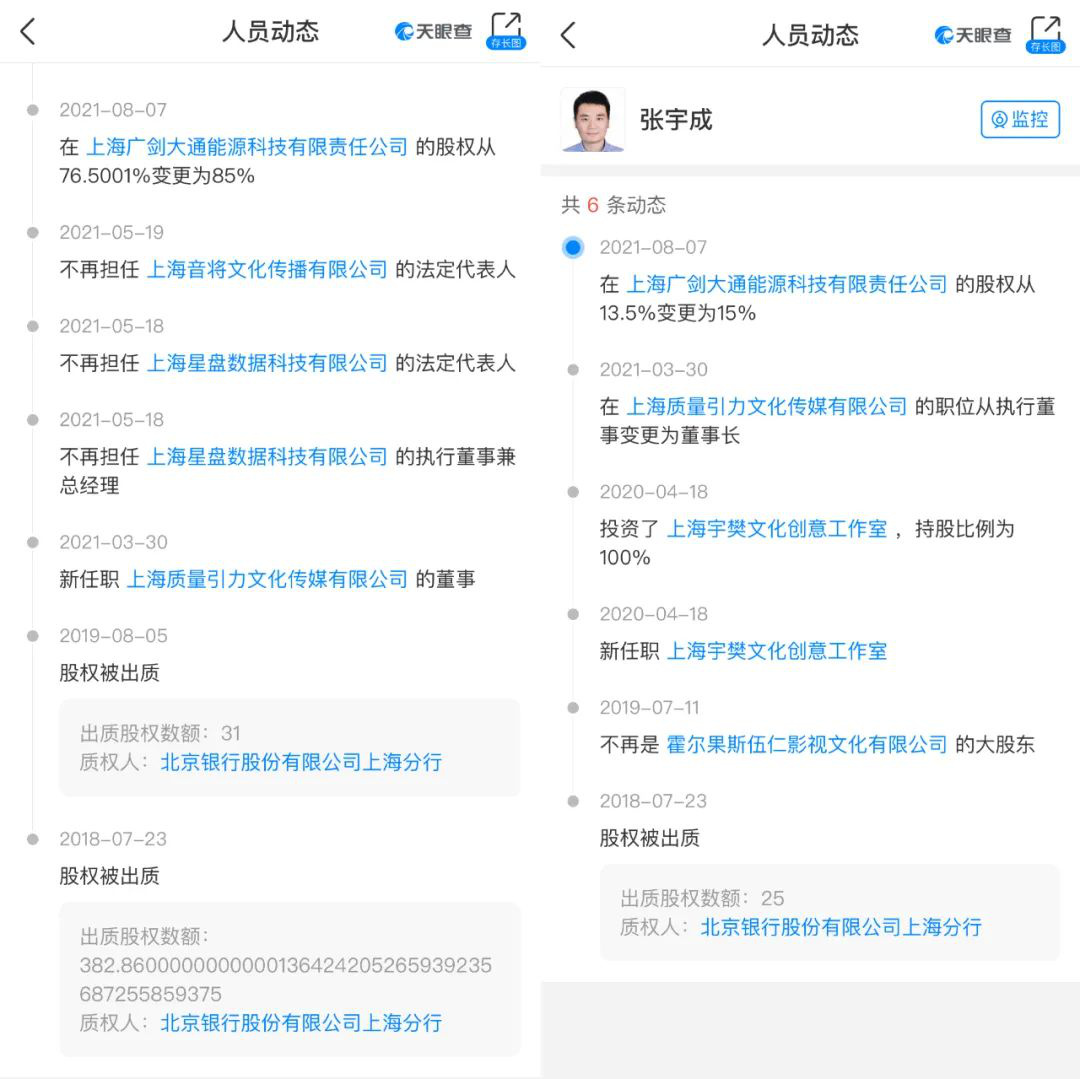
Zhang Yucheng, another founder of the company, was also pledged in 2018. The biggest change in 2019 is that the investors of financial capital, Wang Zheng, Shi Bo and Tang Yizhen, successively withdrew from Zhang Yucheng’s Wuren film and television culture.
However, Hard Sugar Jun prefers that the "money" of stellar gravity comes from Zhang Yucheng.According to the data of Zhang Yucheng searched on the Internet, he studied in Shenzhen International Exchange College, a famous aristocratic school in Shenzhen. He is a full-time international high school authorized by many foreign institutions, which specializes in training students going abroad. The annual tuition fee is as high as 278,000.
Zhang Yu graduated from University College London with a bachelor’s degree in statistics, economics and finance, and graduated from Cambridge University with a master’s degree in economics and finance. From 2013 to 2015, he worked in the investment banking department of Huatai United Securities, which ranked in the top five in China.
He should have started his business in 2015 and caught up with Wang Yizhen. The capital operation of stellar gravity is probably handled by Zhang Yucheng. In 2018, there may be some situations in the capital behind the two. But soon in July 2019, stellar gravity introduced the investment of iQiyi.
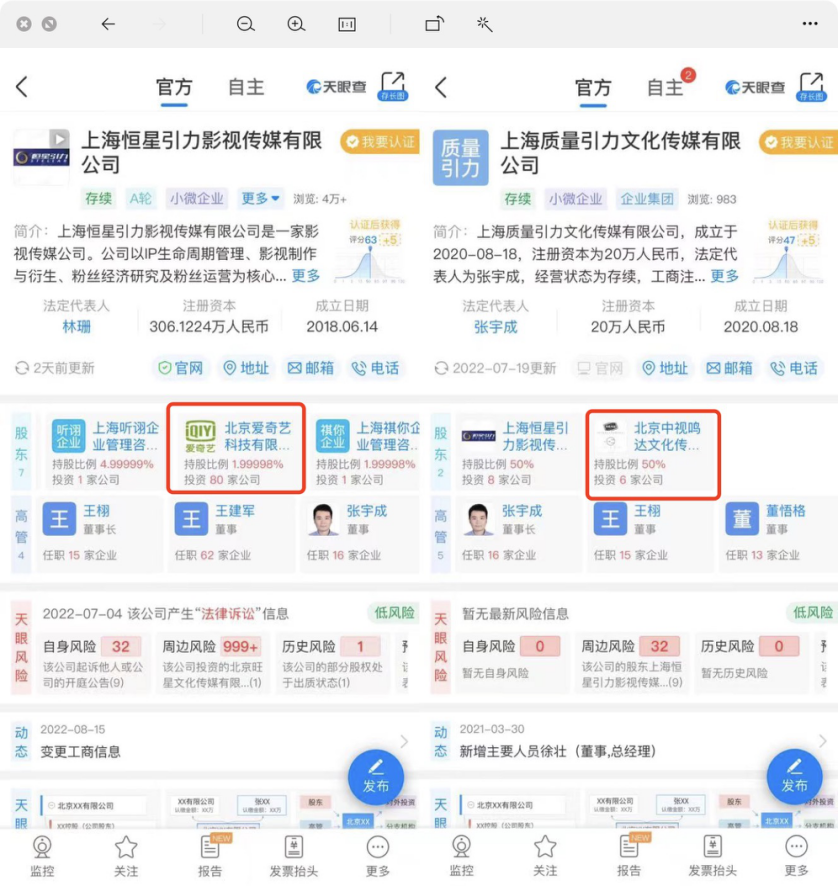
In August, 2020, Star Gravitation cooperated with Zhongshi Mingda Culture Media to establish Quality Gravitation Culture Media Company. The controlling party behind Zhongshi Mingda Culture Media is Tik Tok’s Quantum Jump Technology.In other words, after the investment of long video investor iQiyi, Stellar Gravity introduced the capital of short video byte system.
What’s more worth mentioning is that Wang Jianjun, the mysterious director of Stellar Gravity. He has the employment information of directors, supervisors and legal persons of 62 companies, among which there are many companies with state-owned background, belonging to China Huadian Group, Jinneng Holding Group and Shanxi Financial Investment Holding Group.
It seems that stellar gravity is not only a long and short video, but also a director with such a background. It is not surprising that he has money. However, if you have money, you will have money. If the gravity of the stars can really stably output high-quality ancient dolls, it will benefit the younger generation of viewers. Of course, it is best not to rot.
































 Fashion daren fashion grandma Tuan
Fashion daren fashion grandma Tuan
 Beauty cosmetics daren Pangayu
Beauty cosmetics daren Pangayu
 Musicians @ Uncle Sanpin, @ Liu Xuekun
Musicians @ Uncle Sanpin, @ Liu Xuekun


 Wu Rina (left), head of Aauto Quicker Trend Life Content Center, presented awards to the winners.
Wu Rina (left), head of Aauto Quicker Trend Life Content Center, presented awards to the winners.



